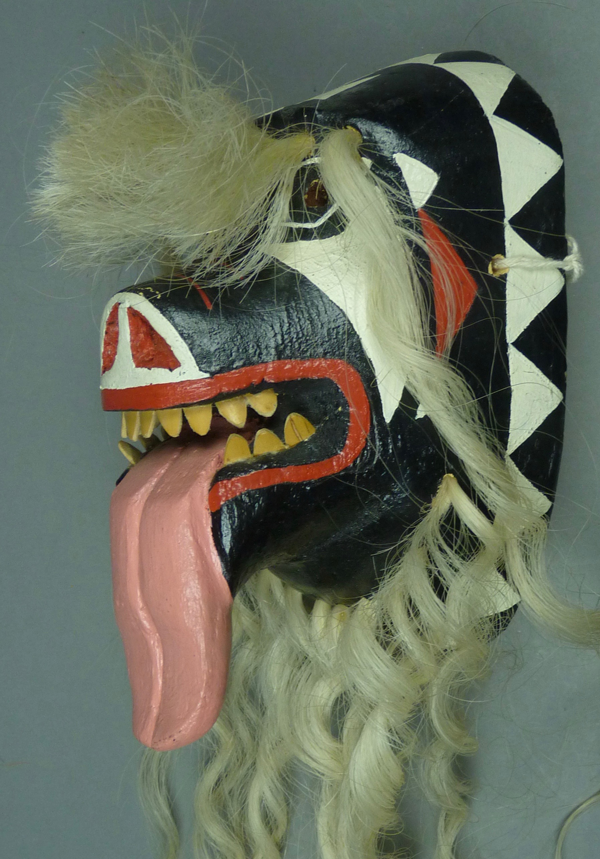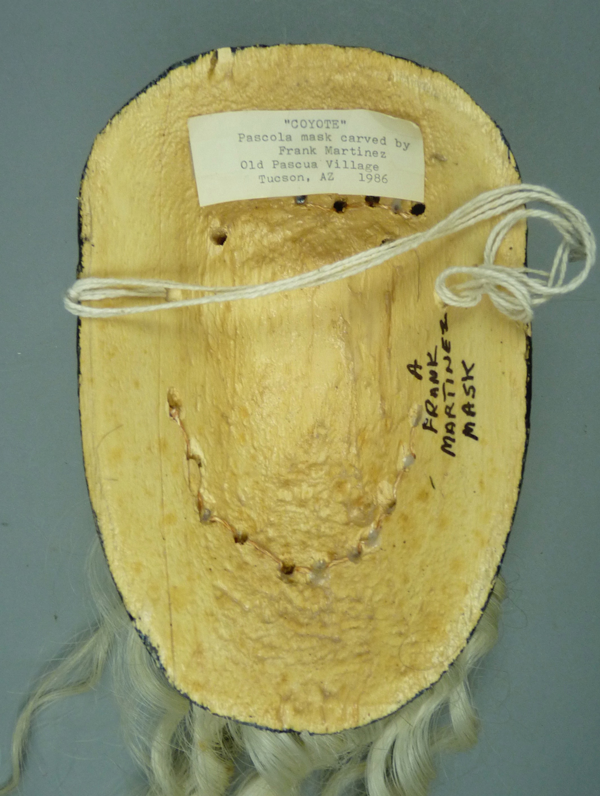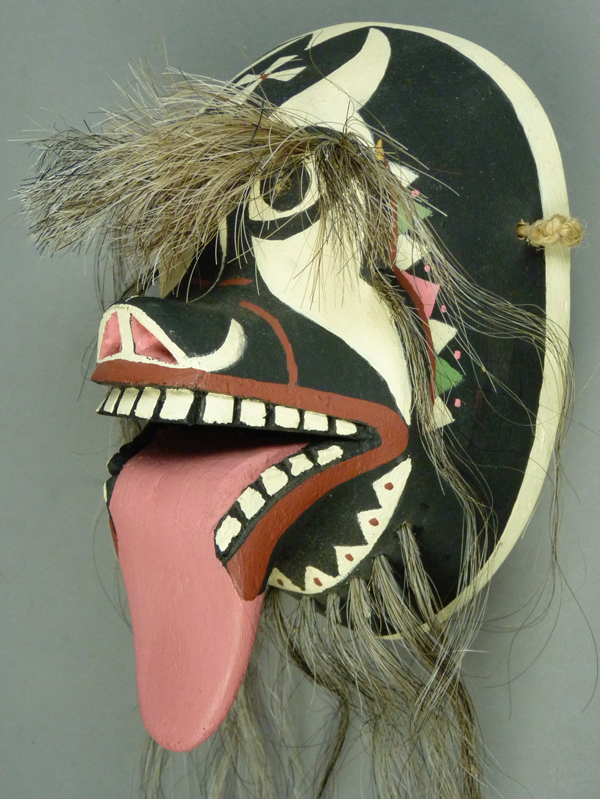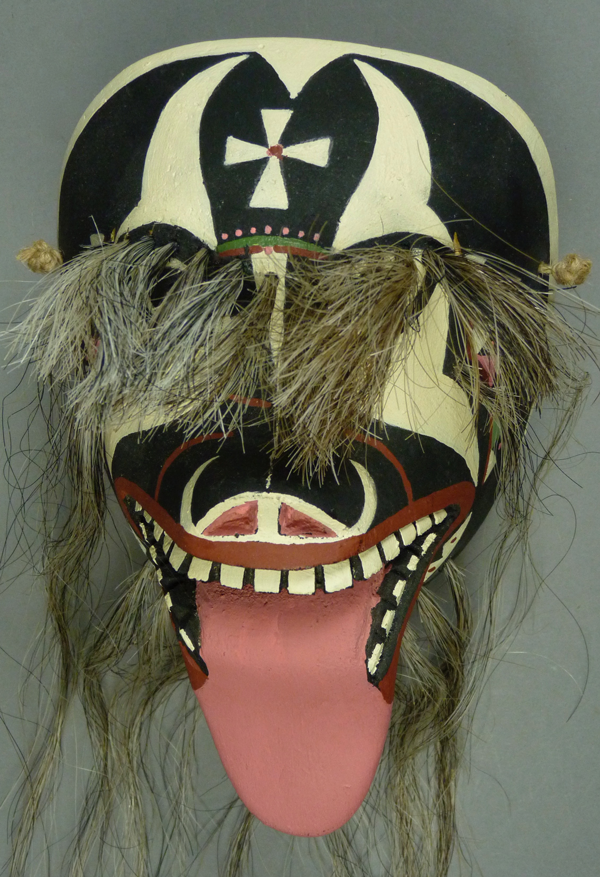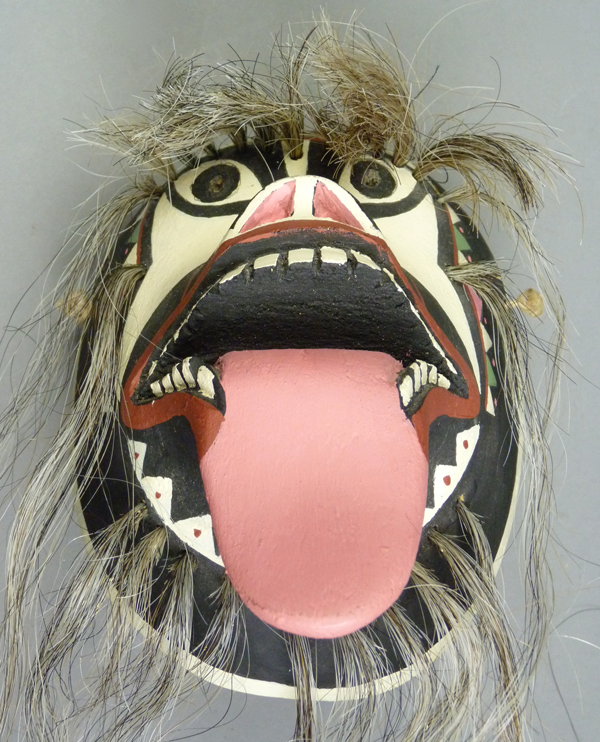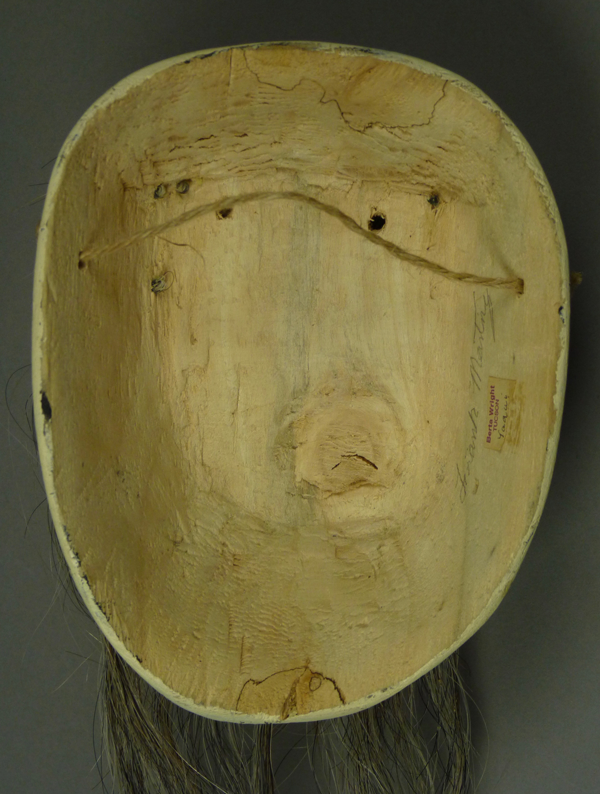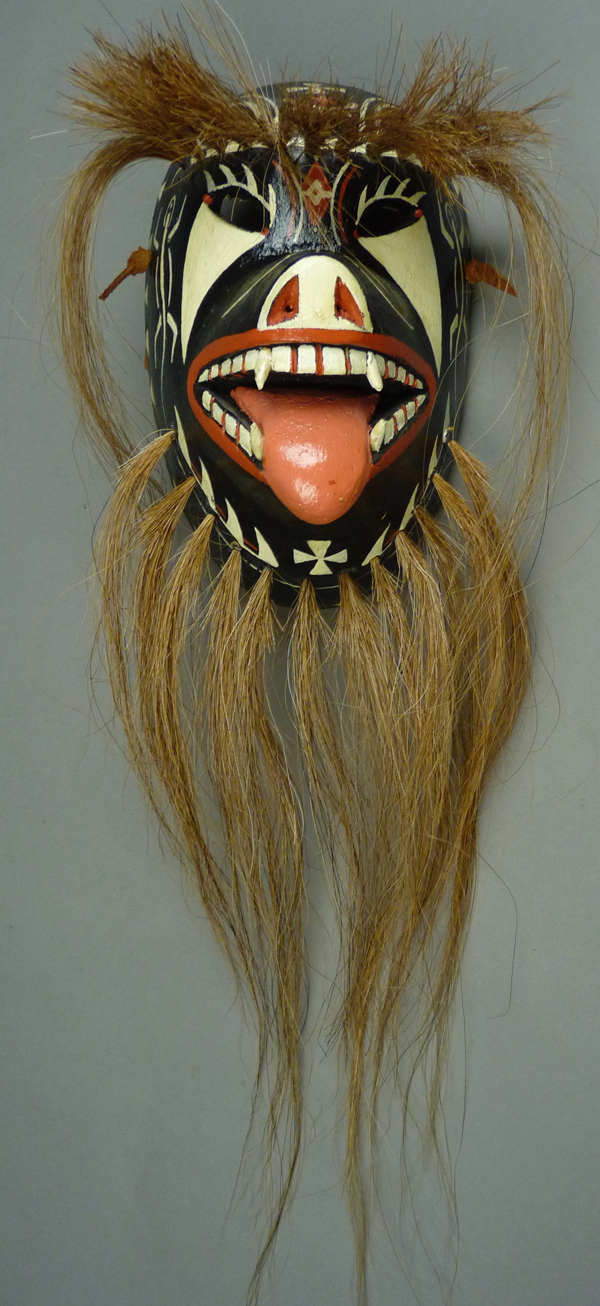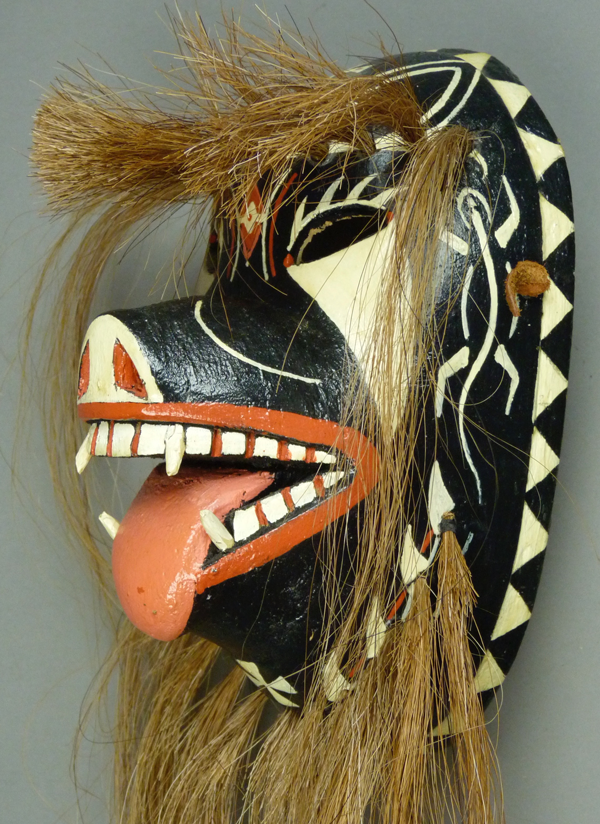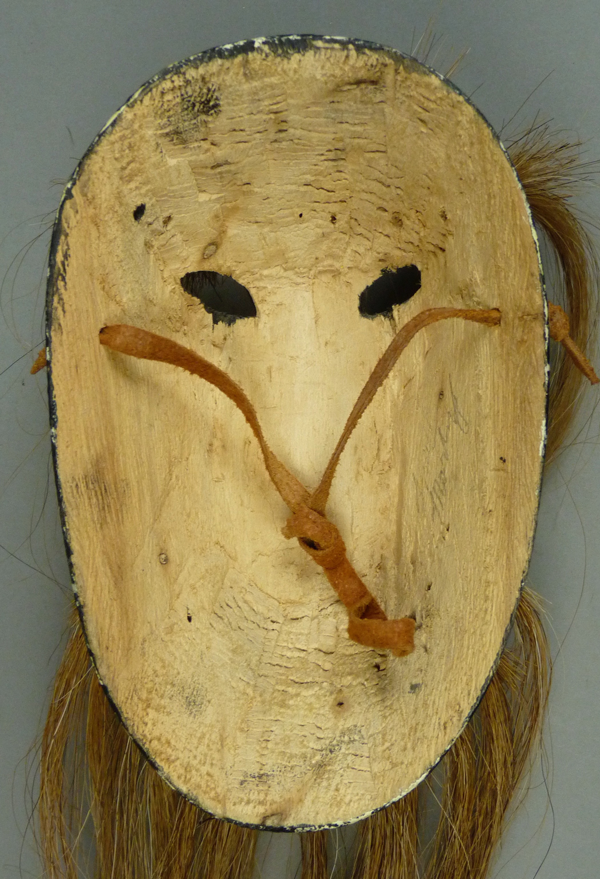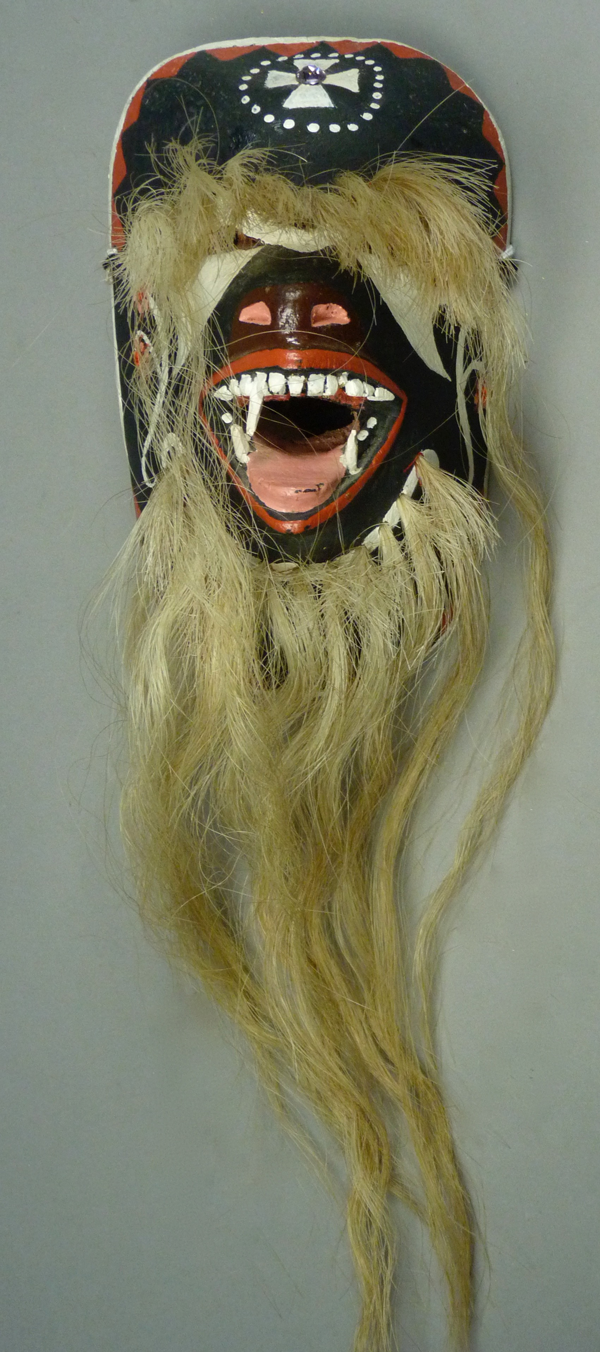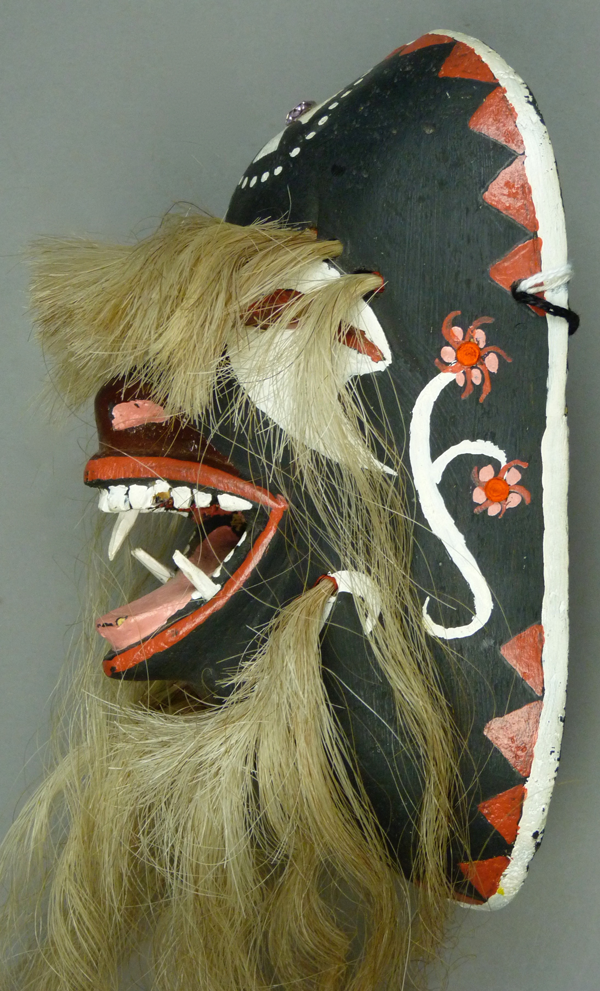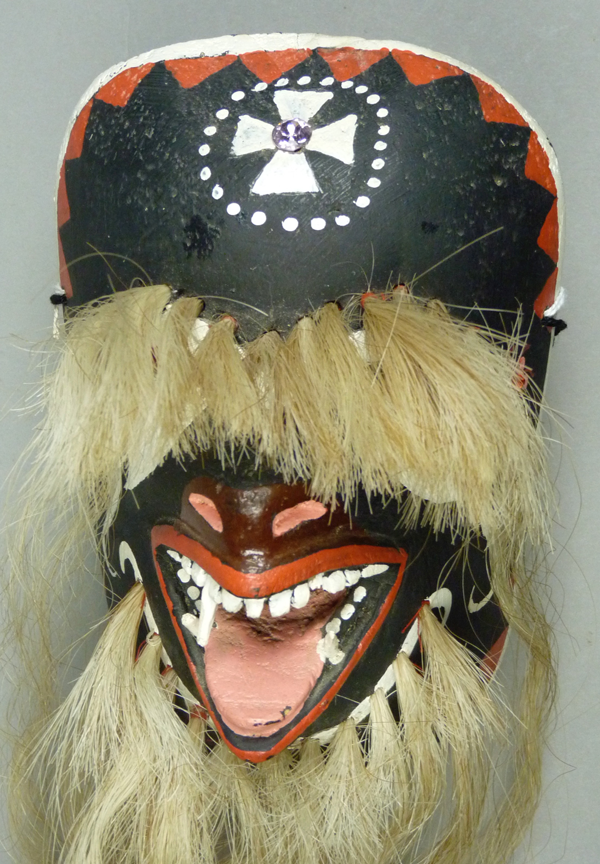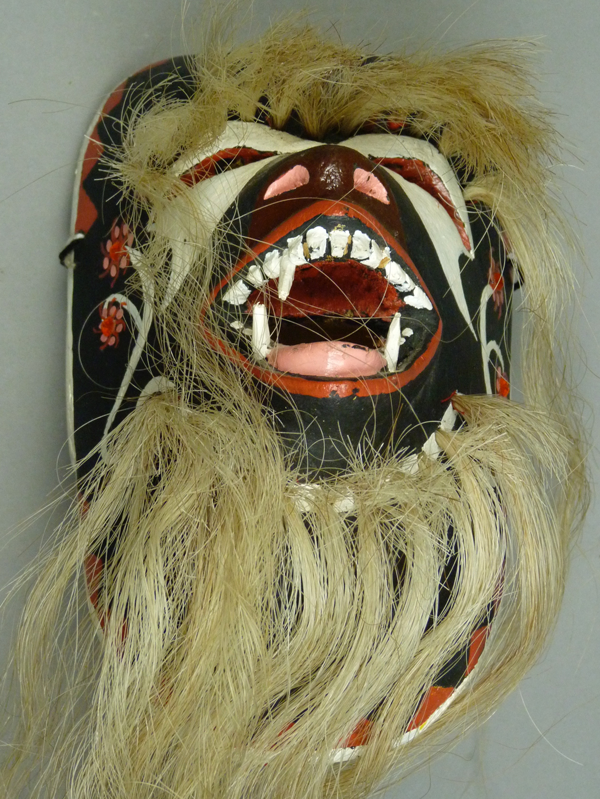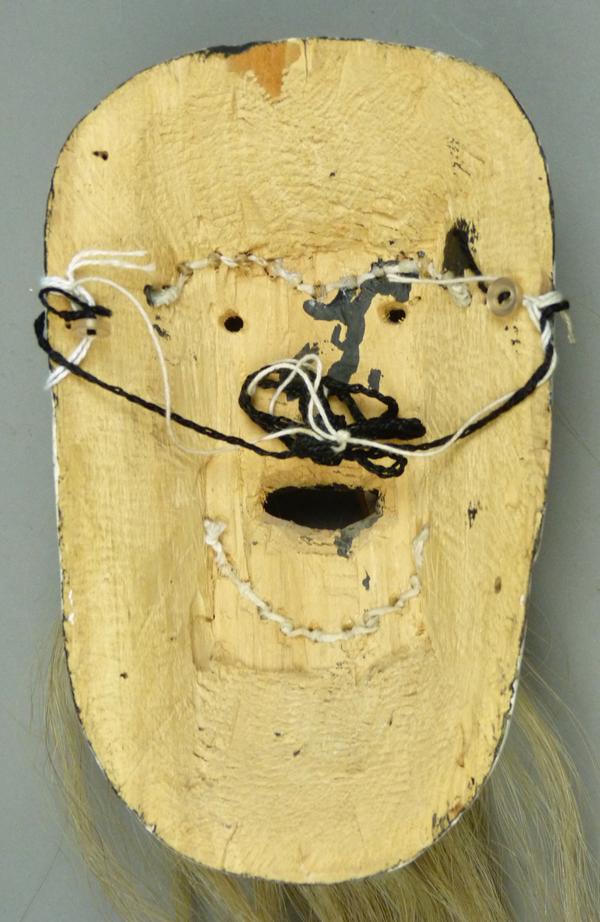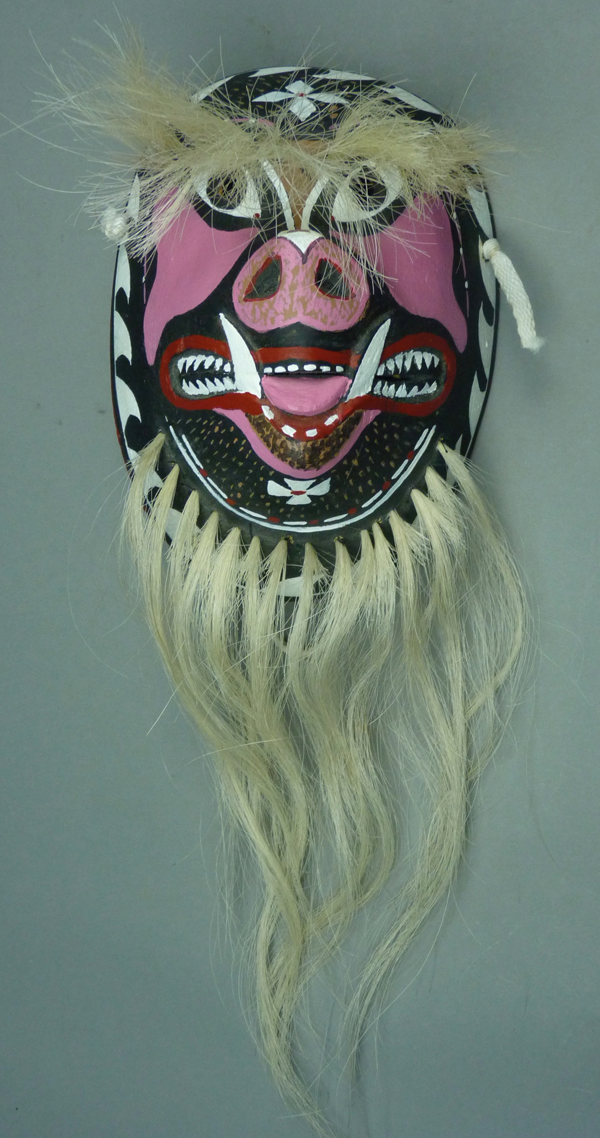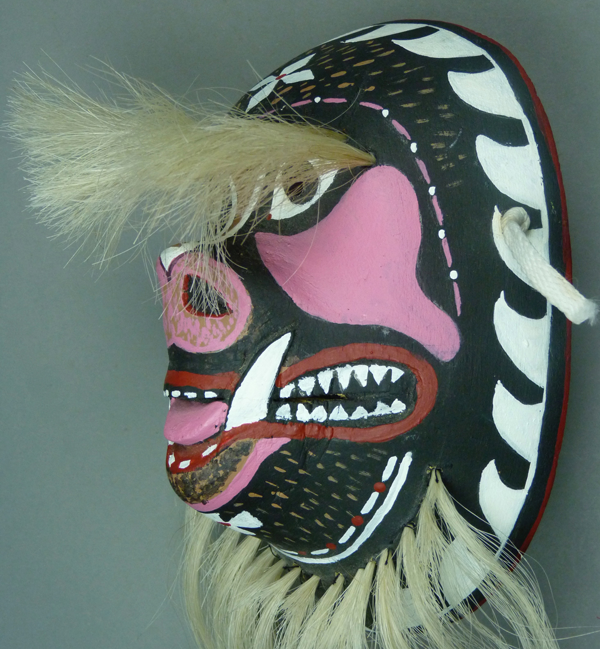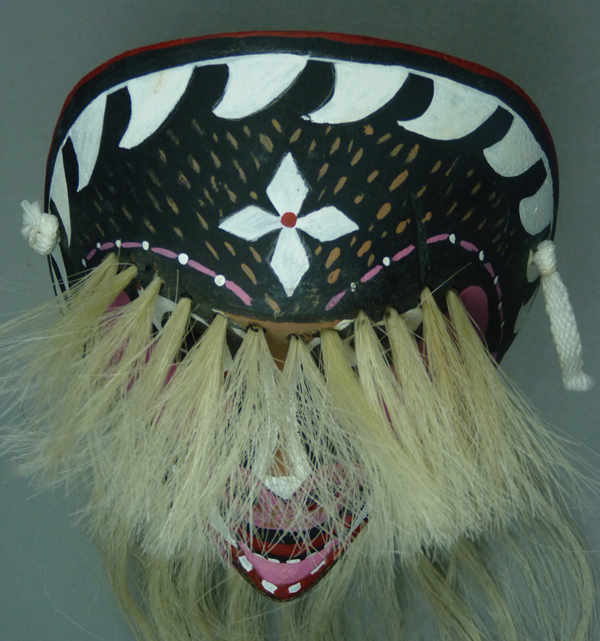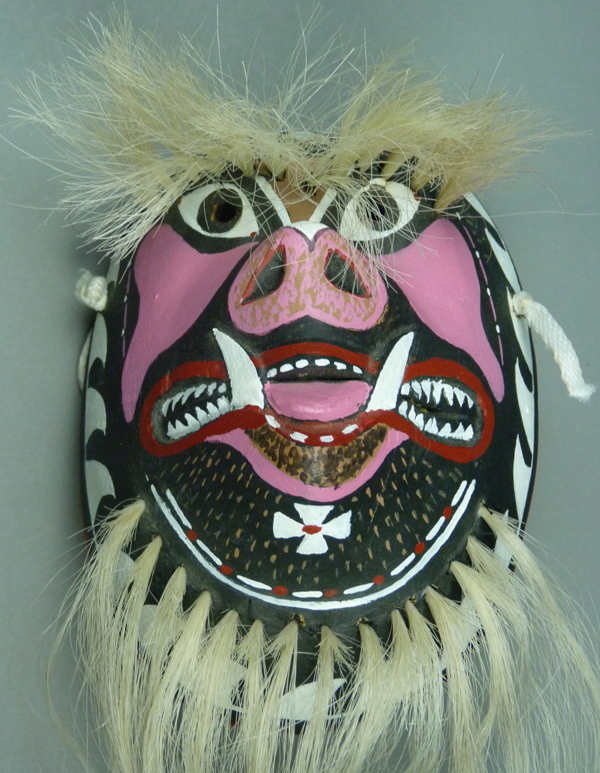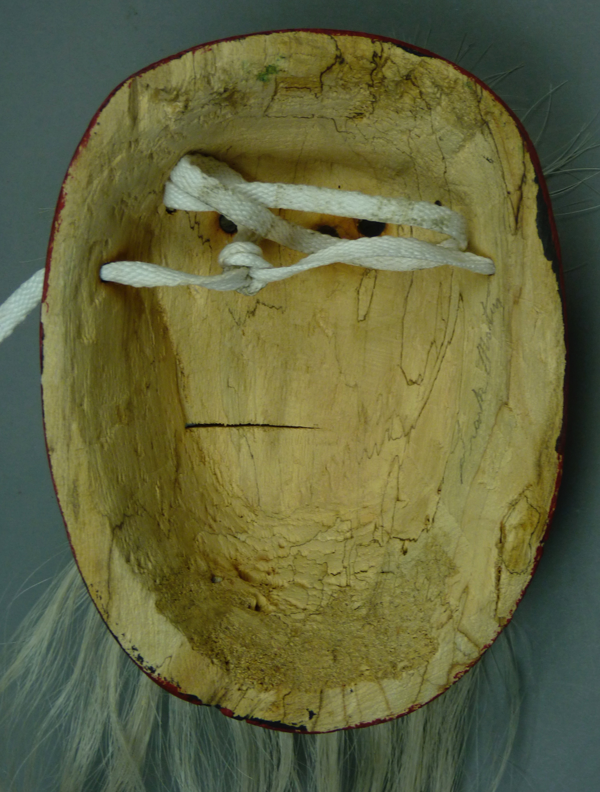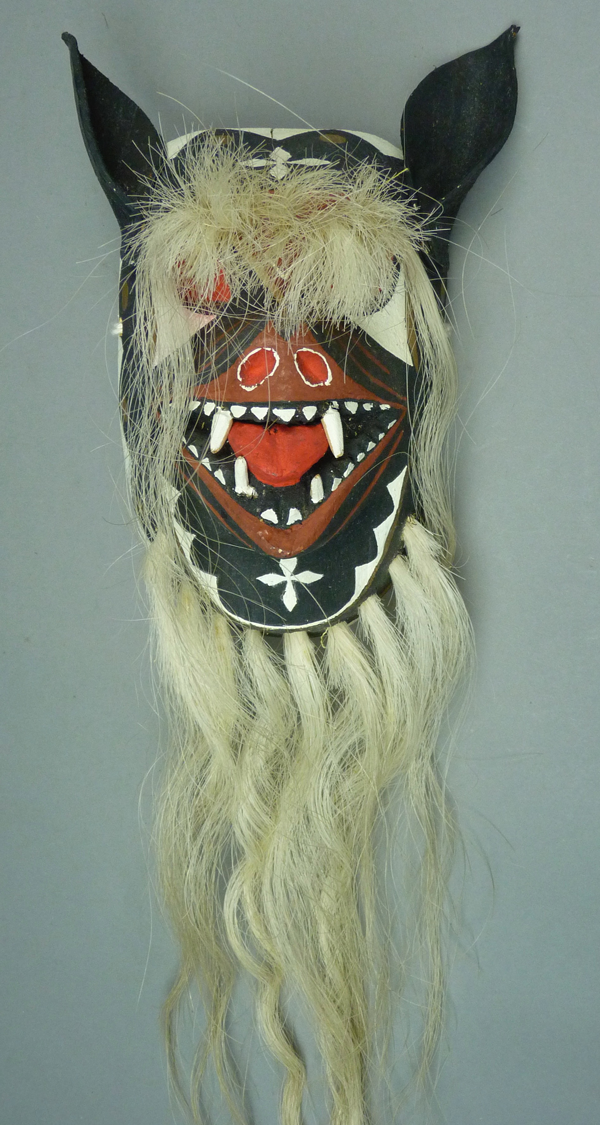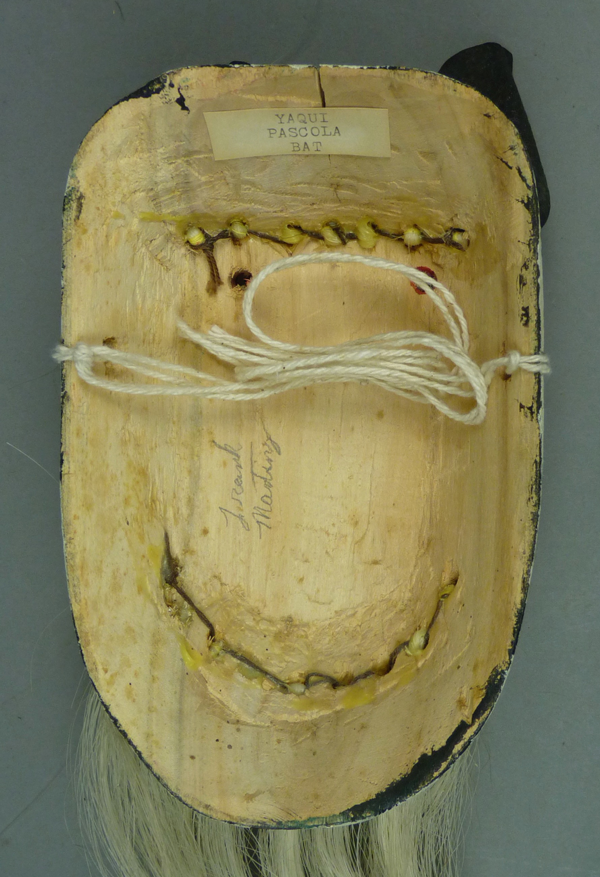In this second post about the masks of Frank “Chico” Martínez, we will look at animal Pascola masks with prominent teeth or fangs. The first four are Coyote masks. To introduce these I will refer again to the article by Tom Kolaz — “Yoeme Pascola Masks from the Tucson Communities: A Look Back” (pp 50- 61); here is the link.
http://www.yoemecarver.com/aiam07.pdf
That article opens with a photo of three masks carved by Frank Martínez—a “Coyote” carved in 2001, an Owl from the early 1990s, and a “Chango or Ape face from the early 1980s. I am going to show you three like that Coyote mask, and next week I will show you Chango masks. Note that all of the masks with catalogue numbers in the Kolaz article are from the collection of the Arizona State Museum (ASM) in Tucson, Arizona.
I bought the first of these Coyotes on EBay™ sometime around 2005. A tag on the back said it had been carved in 1986. For some reason the back had been varnished.
The teeth were carved separately and glued in the mouth. They appear to have been carved from reed or bamboo. This tongue design, which is identical to the one in the Kolaz article, is a reliable marker for Frank, particularly if found in combination with his pinpoint eye openings.
This is a large heavy mask. It is very nicely painted.
Note that this mask lacks a chin cross.
There is no evidence that this mask was ever danced. Elaborate documentation was provided by a previous collector.
The second Coyote was originally sold by the Berta Wright shop in Tucson in the mid 1980s, and I bought it on EBay in 2008. This one is signed in Frank’s hand. It is well carved and carefully painted.
Note the stylized painted ears which echo the stylized triangles under the eyes. The painted decoration on this mask is striking.
This mask has a familiar cross design (see last week’s post).
Such a wide mouth would have permitted a large opening for air flow, but there is none. The pinpoint eyes indicate that this mask was not intended for use by a dancer, so ventilation was not an issue.
There is no chin cross.
Frank’s signature is to the left of the Berta Wright label.
I bought the third of these Coyote masks from Lupe Sinoui, the manager of the Old Pascua community center, in 1990.
This Coyote mask is beautifully carved and painted.
I particularly like the painted designs on the forehead and the bridge of the nose.
The lower portion of the rim design is distinctive.
Really, all of the painted details are notable.
This mask has good openings for vision and a leather strap, but there is no staining from use. One sees Frank’s usual signature.
The next mask lacks the dramatic tongues found on the first three masks, but it too was identified by Frank as a Coyote. Tom Kolaz purchased this mask from Frank in the 1980’s and sold it to Fred Huntington. I bought it from Fred in 1999.
This mask does have an opening through the mouth to the back of the mask.
I like the elegant way that Frank carved this tongue.
This mask is well carved, and if the eye openings on the face were extended to the back, it could easily have been danced.
There is no chin cross.
Frank did sign the back in his usual style, but this is barely visible on the left side.
Another mask that looks somewhat similar is probably a portrayal of a Javalina, or wild pig.
It has a pig’s snout.
This is another mask with terrific paint.
The painted lines on the forehead and chin are probably meant to indicate the Javelina’s bristles.
There is a chin cross on this mask.
The slit for the mouth is so tiny. Frank’s signature is on the right side.
The last mask in today’s post has the face of a bat. One wouldn’t necessarily plan to put a bat mask with this group, except that it has such a toothy face.
This mask has nice painted crosses on the forehead and chin.
The leather ears are nailed to the mask with small brads.
I appreciate these paper labels.
Next week I will show goat and monkey masks by Frank Martínez.


